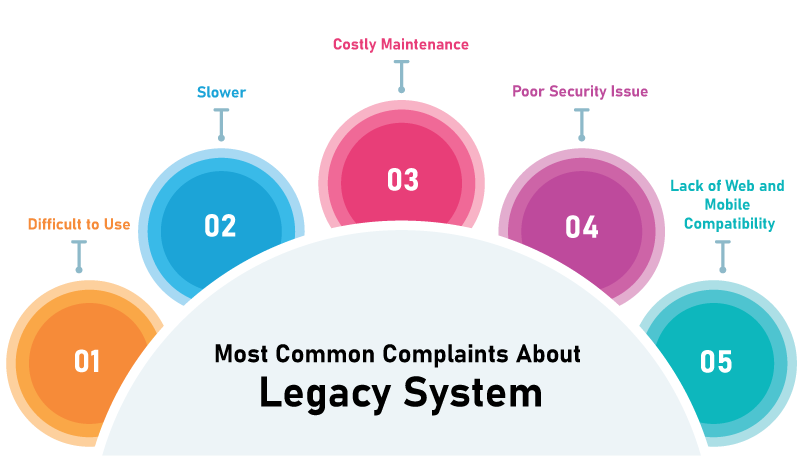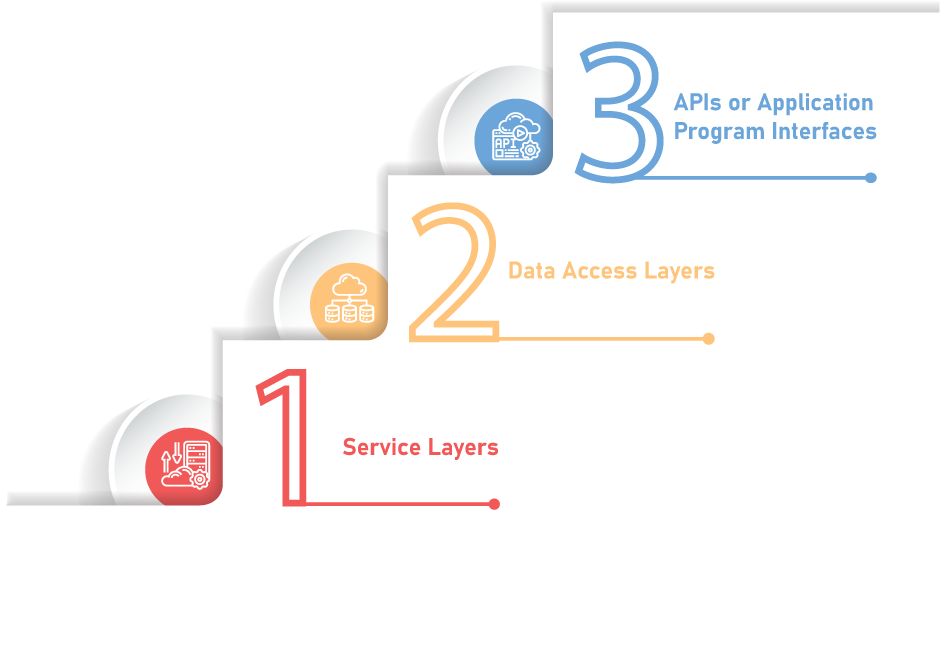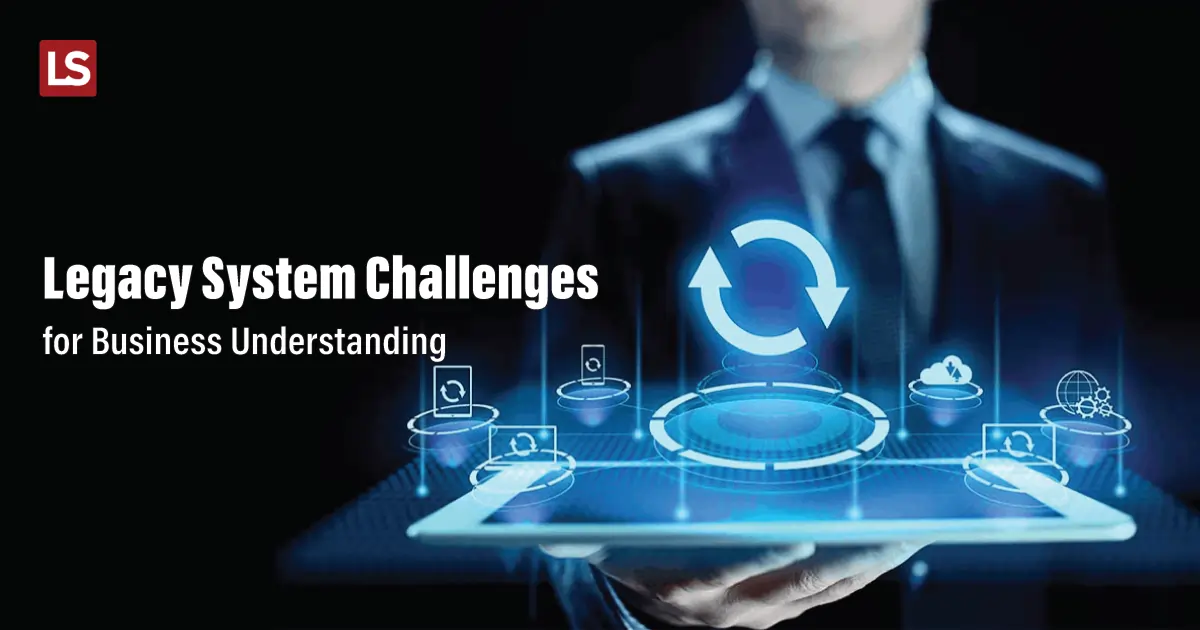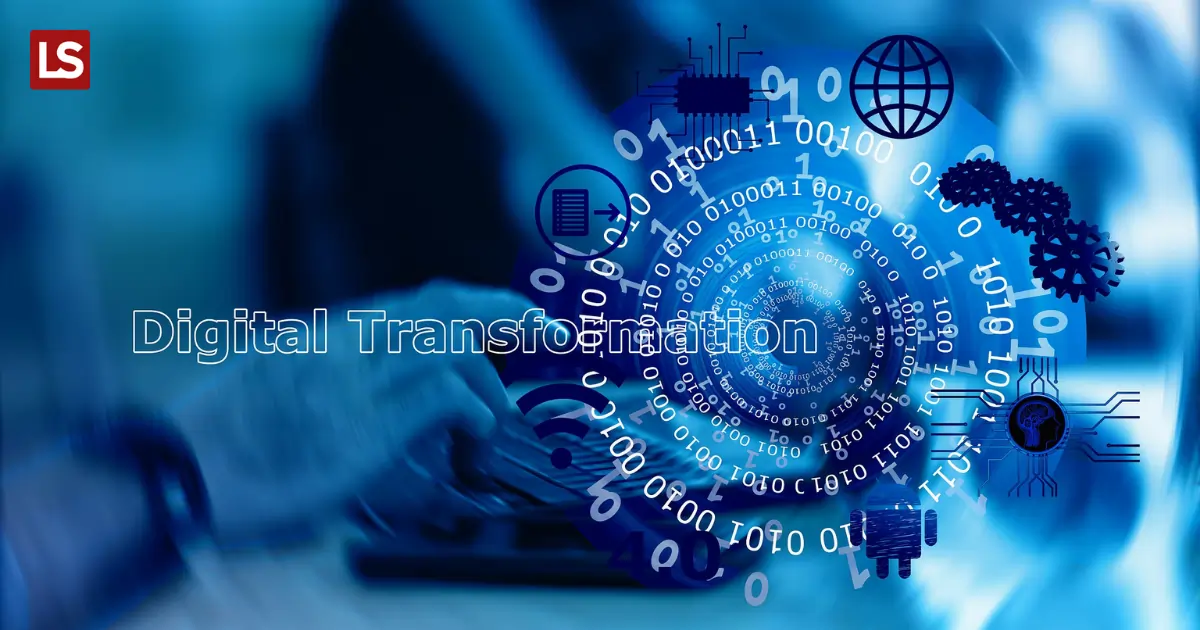Legacy systems are a very real problem, especially in the business world. In many cases, these systems have been presented since the days when paper records were kept, and their lack of progress can force businesses to modernize their legacy IT infrastructure.
You may be thinking about how this will impact your bottom line, or how difficult it is to introduce new technology into an already existing system. However, before you decide that there’s no point in trying to get it up and running again, here in this guide, there are some reasons why legacy systems are worth modernizing.
But before that, we need to understand why your business should modernize the legacy IT system, and how you can begin bringing state-of-the-art technology into your organization today.
What Is A Legacy System And Why Businesses Use It For Long?
So we have tried to put some briefing on a legacy system but still lets us understand the exact definition and later we will know the reason why so many companies are still using Legacy systems.
Let us assume the time when an accountant was a person who used to handle the financial matters of a company on a piece of paper and now think of today’s scenario where we use Quickbooks or any other accounting software to maintain our financial records. You see we can not keep on using the conventional ways to sort our huge accounts data, eventually, we had to use modern ways to keep track of our economic terms. Legacy systems are like your old accountant; the other modern tools are legacy app modernization.

Therefore, legacy systems are the old and traditional concept of any software or obsolete technology that is incompatible with your growth panel or lags down your whole work system.
You would be even amazed to know that a report from VMware and MIT Technology (2017) has shown that 62% of people working on software development have quoted that legacy system integration is one of the huge challenges of multi-clouding. However, to improve network security, make room for new software features, and increase productivity, many businesses simply must modernize their outdated systems.
Moreover, in this pandemic time, while every individual is seeking work from home, it would require the best errorless technology to cope with its virtual office. Likewise, 66% of IT professionals claimed that the COVID-19 pandemic “revealed flaws” in their digital strategy, according to AppDynamics’ Agents of Transformation Report 2020: COVID-19 Special Edition.
The 10 most important federal legacy systems, some of which date back to the 1970s, have recently been recognized by the US Government Accountability Office (GAO). However, 65 systems were submitted, making up the whole list. Most of them have problems with hardware or software support, rely on outdated programming languages like COBOL, and have security flaws.
Why do businesses use an outdated software system for so long?
To answer this, there is a small thing to consider: people mostly rely on the techniques that they have been used to or have learned meticulously. It is often a hurdle for them to contend with the new and multi-functional technology in less time or they find it time-consuming or sometimes, perceive it to be costlier. On the contrary, there is a huge difference between myth and reality.
Drawbacks of choosing legacy systems
The problem with legacy systems is that they are often not able to be easily updated. This means that when there is an issue with the system, it can be extremely difficult to fix. If someone gains access to a legacy system, it can be extremely easy for them to do whatever they want with it.
This means that if someone has access to your system, they could potentially cause damage or even steal information from you. While some companies may have high-security standards for their systems, others don’t necessarily put enough thought into this aspect of their business.
The most common complaints about legacy systems are:
They are difficult to use
This can be measured in terms of the number of steps it takes to do a task or the number of clicks it takes to accomplish one step. On average, a user is more likely to stumble, make an error, and give up on tasks than they are with newer systems. This is not easy to balance with a broken or old software system that results in poor or delayed work quality.
They are slower than new ones
This is measured in terms of how long it takes to complete a task, or how long it takes for a particular application to respond to user input. A faster system means less time spent waiting for things to happen and more time spent doing things.
The maintenance is more pricey
When it comes to upgrading the old software system, it always lacks a lot of features that cost mostly higher than the old functionalities. This means that any new changes or updates will have to be done in a way that doesn’t disrupt these systems, which can lead to longer timeframes and higher costs.
Poor security issue
In this time of digitalization, cybercrime is a new normal thing. Aiming precision in businesses can only be confirmed with the latest version of the technology. Many hackers are roaming to grab your whole data now or then and there is no certain fix to let it down yet, the best solutions appear when you put your crucial data under the impression. The old software may disappoint you by keeping the security of your data at stake.
Lack of web and mobile compatibility
The web and the mobile world have changed so much since their inception that it’s difficult to find a system that can adapt to the new trends. Legacy systems are often built for a single purpose, which makes them unsuitable for other purposes. For example, if you’re building a mobile app, you’ll need to use an efficient database and make sure that it supports your app’s API (application programming interface). But if you’re using an old system that doesn’t support your API, it won’t work with the new one.

Integration And Compliance; A focused Solution of Legacy System
It is hard to find or say that the legacy system of your company needs to be modernized or to be changed yet, one can see it in the real values in the growth aspect of the company. Herein, let us learn about the forced causes for the integration of a legacy system.
Enhanced Agility
Legacy systems have a place in the enterprise, but they need to be integrated and compliant with the new business architecture. The legacy system must integrate with the new system and the legacy system must comply with compliance standards set by your organization’s IT department. You get a more vulnerable and dextrous system quality than before integration.
Handy Data Obedience Norm
Majorly it is a good trait of a great software system to keep your data in a good store with a great flow to make it available for the entire organization. But if one is stuck only with a legacy software system, integration is a must thing to happen. It is vital to know more extensively about this:
- New and integrated software systems are a boon for some organizations that are using CRM or finance software.
- Every IT sector strives to be up to date and this seems hard to achieve while using a legacy system.
Grapple With Market Values
Many businesses have revealed that an old software system was a big pain point. Interaction comes in the form of a new life to the old software systems. It brings out the perplexities of the legacy software and puts it ahead with a modern design involved.
Therefore, we can acknowledge the three basic types of software integration
Service Layers
When modernizing existing systems, adding service layers is a popular tactic. They serve as a go-between for your old application and the fresh system. Before the data enters the new or current system, service layers change it.
Data Access layers
It is in the form of a database in which all the data is stored and it lets the developer use the data easily. The goal of a data access layer is to provide a mechanism for accessing data from a legacy system. The data access layer may be based on the application’s user interface, or it may be a separate component.
APIs or Application Program Interfaces
APIs are the way to get your software out of the box and into the hands of users. APIs provide an easy way for developers to integrate their products with other systems. Without APIs, developers would have to manually write code to integrate with other systems. But with APIs, they can simply write some code that calls another function on another system, and everything will work out fine.

Why Modernize Legacy Systems?
Legacy systems are expensive to maintain and upgrade. As a result, many companies find that they have been forced to invest in new technology that may not be adequately supported by the existing system. The result is a growing gap between what is available with new technologies and what is available within the existing system.
The solution is simple: modernize your legacy system so it will work better with newer technologies and provide better support for today’s employees.
Challenges and risks
Another reason to modernize legacy systems is that they cost too much money to support now. Legacy systems are typically very expensive to maintain because they were built using expensive development tools. In addition, these tools require a significant investment in training staff who will be responsible for keeping these legacy systems up-to-date and functional.
Finally, many legacy applications have been developed so that they can only run on operating systems – which means upgrading them can be very expensive depending on how old they are. All in all, the modernization of legacy systems provides:
Digital future to your workforce
Your employee would be advanced with the modern technology that eventually brings a great business back to you. According to a survey in 2018, just 5% of CIOs identified as “digital innovators,” however data from 2019 showed that by that time, 32% of them declared to be at the forefront of entrepreneurial orientation.
Rethinking a new software system in your business may lead to a proficient workflow for the business and to your great surprise, it puts you one step closer to your goal in a shorter time.
Following are some challenges encountered by legacy modernization:
- It takes time for new systems and new structures to be designed, developed, and installed, which can take years or even decades.
- Even when new systems and new structures are installed, they often require significant maintenance efforts over their lifetime because they are not properly designed or maintained by the original building’s owners or managers.
- The new technology may not be appropriate for your business needs and/or budget constraints.
- The main challenge of legacy modernization is that it requires a significant time to develop, as well as a high level of expertise. Furthermore, the process may be very complex and complicated.
- Dealing with legacy codes is a bit risky and has to be maintained carefully by the experts. Here, the integration should be taken care of with the proper replacement of relevant skills.
Takeaway
Keep in mind that going through a legacy system migration can be challenging yet important for a business. However, if you choose to ignore costs and not modernize your outdated systems, you could be putting your business at serious risk of security breaches or data loss that could severely damage your organization.
In conclusion, these legacy systems are very valuable and have a lot of history behind them. Businesses are hesitant to replace them because they not only represent the company’s history but also hold critical data that cannot be lost. At the same time, these systems are often proprietary and incompatible with modern software platforms and technology stacks.

